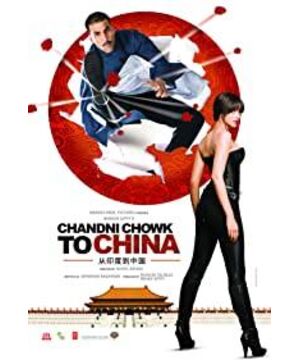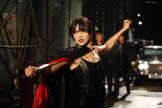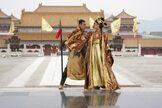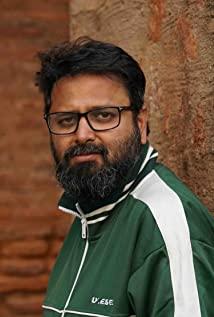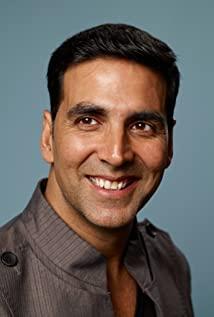Take apart a paragraph from my final essay, and all the kings laughed. Although this movie from ten years ago is curious, but when you think about it, it represents certain phenomena.
After Prime Minister Rajiv Gandhi's visit to China in 1988, relations between the two countries were normalized. There were brief close exchanges between the two countries. However, with the Indian nuclear test and the public declaration that China is the biggest potential threat to India, the exchanges between the two countries In a period when the exchanges between the two countries were greatly affected by political factors, China’s rapid development has made China’s image significantly changed compared to the past, which has made India unable to understand and recognize everything in a timely manner. The changes that have taken place in China have become very strange to India.
At the same time, although the cultural exchanges between the two countries have increased significantly after the normalization of the relations between the two countries compared with the period when the Sino-Indian relations have deteriorated, they have remained more in the field of traditional art. The two countries know about each other’s contemporary popular culture. Very few, and at the same time, the cultural exchanges between the two countries stay at the high-level, there are many high-level activities, and the results are not unfruitful. However, because there are few cultural products that can make the people love to hear and see, the broad masses of the people of the two countries did not really know each other in cultural exchange activities. This makes the two countries' image of each other still vague. This situation is reflected in the movie product whose audience is the broad masses of people, which is the controversial "Moonlight Bazaar to China" in China.
"Moonlight Bazaar to China", released in India in 2009, is India's first Chinese-themed film since the new century. The cast of this movie is not luxurious from today's perspective. The male protagonist Aksha Kumar and the female protagonist Deepika Padukone can be regarded as the most popular stars in Bollywood today. But the film is generally produced at a mediocre level, and the plot has nothing to do with it. However, as the first movie in the new century that contains Chinese elements, this movie has received considerable attention. Regardless of the plot and logic of this movie, just by analyzing the first Indian film with a Chinese image since the new century, we can also see the Chinese image in the eyes of some Indians since the new century. .
This movie mainly tells the bully Hu Zhou doing a domineering blessing to enslaved the villagers in the village under the Great Wall. The villagers learned through divination that their savior was in India, and the male protagonist Sidhu, who grew up in the Moonlight Bazaar, was a chef with bad luck. By coincidence, after passing the certification of a liar, Sidhu was greeted back to China by the villagers as a savior, but was defeated by Hu Zhou, and his dependent family members were also killed by Hu Zhou. Finally, under the guidance of Chinese martial arts masters, he learned Kungfu and defeated. The fear in his heart finally brought down the plot of the bully.
Although this film contains many Chinese elements, in fact, Indian film workers still lack a clear understanding of China's image and cultural connotations, so their ways of expressing Chinese culture in films are more derived from reference. For example, the terracotta warriors and horses were excavated in the village at the foot of the Great Wall, which seems to have borrowed from the originality of the American Hollywood movie "The Mummy 3." The film depicting ancient Chinese scenes in the song and dance fragments in the movie also pays more tribute to Zhang Yimou's "Full of Golden Armour in the City" launched in 2006. At the same time, the Hong Kong-style traces in the movie are very strong. The word "big brother" on the wooden box at the beginning of the movie clearly bears the traces of Hong Kong movies. The martial arts scenes also have a considerable Hong Kong style. This strong Hong Kong-style style may be comparable to the male protagonist. Aksha Kumar studied martial arts in Hong Kong. The actor of the villain Hu Zhou in the film is Liu Jiahui from Hong Kong. This is the most impressive Chinese character in this movie. This villain uses gorgeous kung fu to take human lives when he appears on the scene, which reflects his ruthless characteristics. , And his strategy of directing the heroine and her twin sister to kill each other also reflects the character's scheming. It can be said that the Chinese characters in this movie are more full-blown.
Many people think that this is just a movie that simmers Chinese elements in a mess. Although the director tried to integrate Chinese culture into the film as much as possible, it was very unsuccessful. For example, at the beginning of the film, the villagers sought help from the gods under the oppression of bullies, but the elderly who fortunetelling for the villagers in this section In terms of physical characteristics, he is a Taoist person, but he leads a group of Buddhists in a secret Buddhist temple to divination for the villagers. Although there is indeed a connection between Taoism and Buddhism in China, the bluntness of Taoism and Buddhism here is a bit contrary to harmony. And in the scene where the villagers greet the hero at the airport, we can see the bridge where the director adds traditional clothing that violates the harmony to the villagers in order to reflect the Chinese characteristics. The most impressive part of this movie is his singing and dancing clips. On the way the male protagonist flew to China, he had a dream about China. The singing and dancing based on the male protagonist’s dream were divided into three. The themes correspond to ancient, modern, and modern China. From the choreography of the song and dance, we can see the director’s understanding of Chinese culture. The ancient scene in the song and dance selected the scene of the ancient Chinese royal palace, but it is obvious that the director Drawing lessons from Zhang Yimou's "Full of Golden Armor in the City", there are yellow flowers all over the palace. The modern scene was selected in an area similar to Shanghai Beach. The male protagonist in a suit and the female protagonist in a cheongsam danced gracefully. This setting is more in line with the historical background of the time. As for the modern scene, it truly reflects the Indians' lack of knowledge of the current situation in China. The scene where the hero and heroine dressed up and danced in front of a modern building is applicable to any country and does not reflect the characteristics of contemporary China. It is well known that great changes have taken place in China in the first decade of the 21st century, but the director has no deep understanding of the great changes in China so that the description of modern China in the film is not convincing. The above scenes all reflect the dilemma that this movie has become nondescript because of deliberately embodying Chinese elements. This film can also be said to be an unsuccessful attempt. In fact, this is not a problem unique to this film. In fact, in recent years, major film countries in the world have tried to include some Chinese in their films in order to cater to the Chinese film market. Elements tried to win the favor of Chinese audiences. But these attempts are often unsuccessful or become successful jokes, which can be regarded as the norm in cultural exchanges.
It is true that this movie does not embody any core of Chinese culture, it just mixes the appearance together. But this unsuccessful movie actually reflects the Indians’ most common understanding of China’s image, such as martial arts. As one of China’s cultural business cards, Chinese martial arts has a high reputation in the world. Bruce Lee of the last century, Jackie Chan and Jet Li of this century are both representatives of Chinese martial arts culture in the world. In the last century, martial arts movies were all the rage in India, and they have become the deepest cultural impression of many Indians on China. In this movie, the protagonist Sidhu learned martial arts with the Chinese police and defeated Hu Zhou with the help of martial arts. It can be said that the Indians have regarded martial arts as a label of the Chinese. And for the embodiment of China's "world factory" status, the incredible industrial products in the Chinese factory visited by the heroine in the movie and the plot of factory products popular in India show the Indians' cognition of China's "world factory".
This film was released in 2009, when the first decade of the new century is about to end. Through this film, we can see the image of China in the eyes of Indians since the normalization of relations between the two countries. It is true that this movie has a lot of improvement in characterization compared with the Indian movies in the era of demonizing China, but we must also see that the Chinese image in this Indian movie is alluding to the embarrassing situation between the two countries. : I don't know each other. Even today, jokes such as India comparing Shanghai to "Little Mumbai in the East" on the Chinese Internet are still endless. Many people in China believe that trains hang people and motorcycle acrobatics are the daily life of Indians. In short, the two countries still have a long way to go before they truly know each other.
Now that ten years have passed, I wonder how the image of China in Indian movies will change...
View more about CC2C reviews


